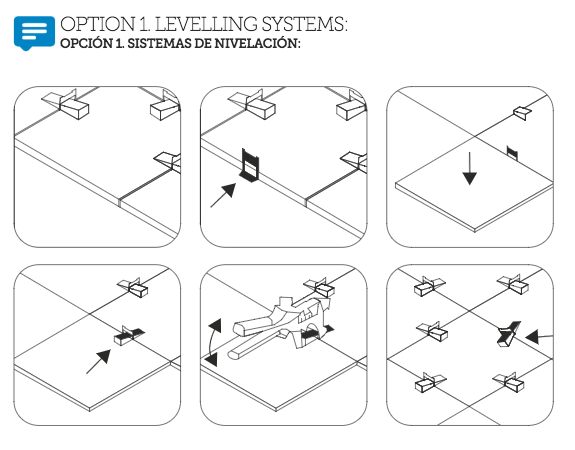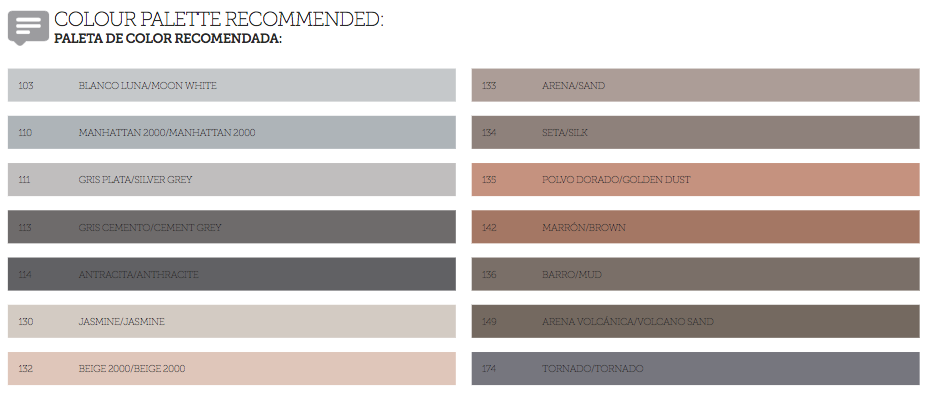FITTING RECOMMENDATIONS
Installing ceramic tiles involves a process in which you must select the right fitting technique based on all the factors involved in the system. Below are some general recommendations to take into account to correctly fit ceramic tiles.
You should always read the manufacturer's recommendations and the data sheets for all of the products and materials you use. It is important to have qualified professional tilers carry out the work to ensure each project is performed with the necessary quality and best end result in terms of technical features and appearance.
Important steps:
- STEP 01 - SELECTING THE TILE AND DESIGNING THE TILING SYSTEM
- STEP 02 - MARKING OUT THE AREA
- STEP 03 - SURFACE PREPARATION
- STEP 04 - INSTALLATION AND MOVEMENT JOINTS
- STEP 05 - FITTING PROCESS
- STEP 06 - GROUTING
- STEP 07 - CLEANING

THE FLEXIBILITY OF LARGE SIZES
Flexibility is one of the features of these tiles, which are proportionately thinner in relation to their length and width to make them easier to fit. The mechanical characteristics of the porcelain make it possible to produce more flexible units that are just as resistant to breakage. Using clays with a high level of plasticity and a dry pressing process gives our units a degree of flexibility.
The resulting surface is perfectly flat and uniform if the specific fitting systems available in the market for these kinds of products are used.
There are several systems on the market to aid fitting of large-size porcelain tiles. They mechanically adapt the curvature of the units due to their flexibility. This also helps overcome any unevenness in the floor, improving the flatness of the resulting surface and preventing units from moving while setting.
One of these systems has been developed by Rubi. It cuts installation time and improves performance. It is made up of reusable strips and caps, which are installed with pliers designed for adjustment with pinpoint accuracy and simple, precision cutting of strips.

THE IMPORTANCE OF GROUT
Cementitious grouts are especially suitable for residential use, e.g. bathrooms, kitchens, swimming pools, façades, balconies and terraces, as well as retail premises, e.g. floor tiles in supermarkets, restaurants, airports and other facilities open to the public, as well as industrial flooring.
It is especially important to fit large and exterior tiles with grout for the following reasons:
- It allows the elastic modulus, and therefore the rigidity of the cladding layer, to be considerably reduced.
- It allows for better control of the pointing's regularity, which helps make the joints more durable and gives them their aesthetic, mechanical and functional characteristics.
For these and many other reasons, the UNI 11493 standard â?? Floor and wall ceramic tilings, published in June 2013, introduced various regulatory concepts, including the need to envisage a minimum joint width between tiles.

 For more information download this catalogue.
For more information download this catalogue.













 For more information download this catalogue.
For more information download this catalogue.

